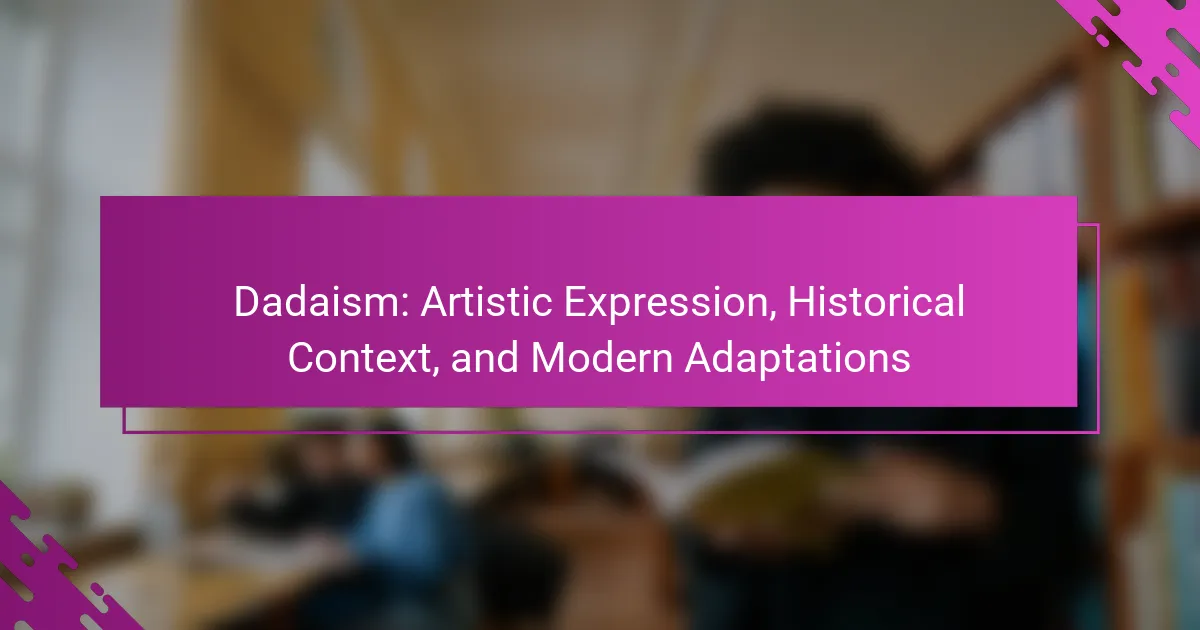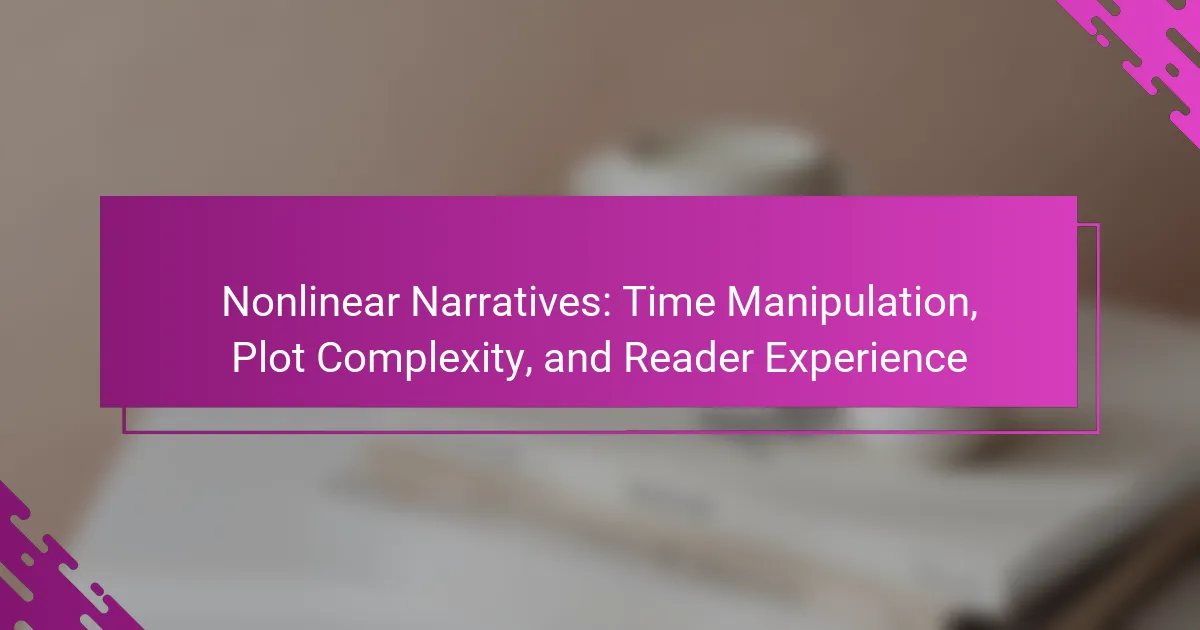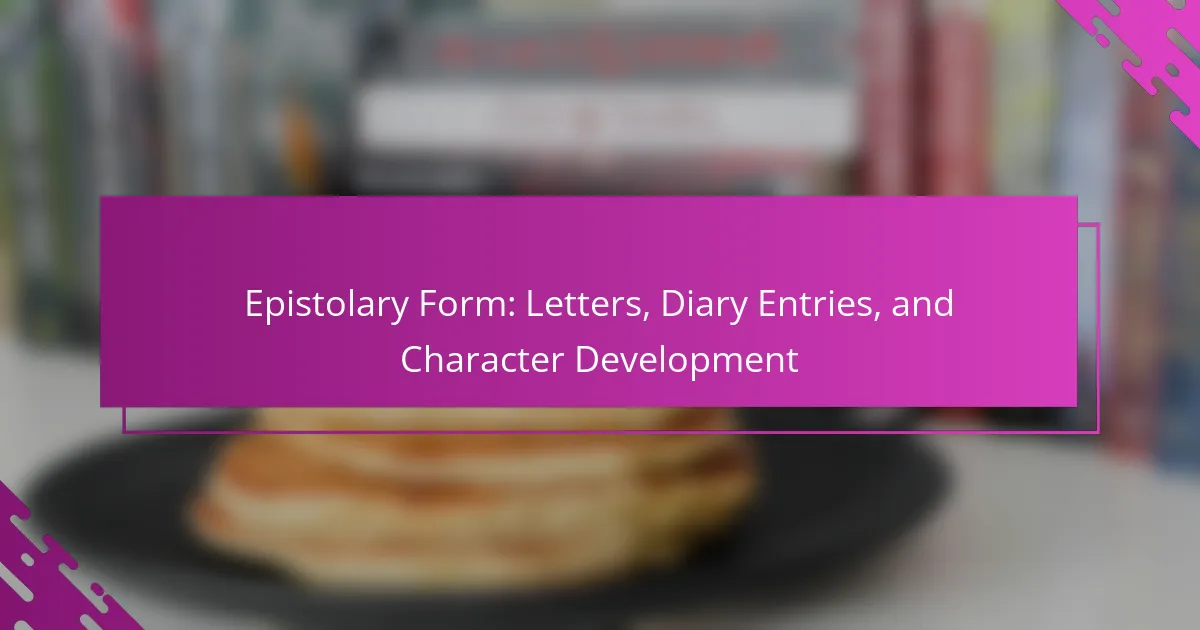Metafiction challenges readers to reconsider traditional storytelling by emphasizing self-referentiality and authorial intent. This article explores how metafiction engages reader awareness, examines various forms like parody and unreliable narration, and highlights the unique attributes found in contemporary literature. It also addresses the challenges authors face in balancing complexity with accessibility while maintaining reader engagement.
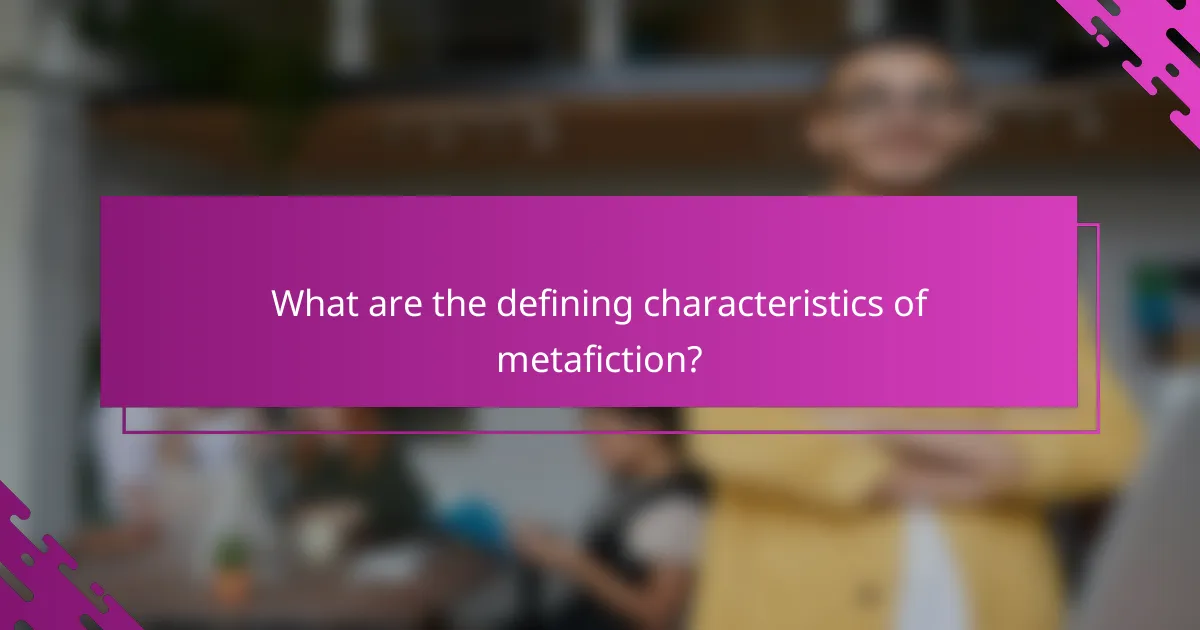
What are the defining characteristics of metafiction?
Metafiction is characterized by self-referentiality, authorial intent, and reader awareness. Self-referentiality allows the text to comment on its own narrative structure. Authorial intent reveals the author’s purpose and perspective, often challenging traditional storytelling. Reader awareness engages the audience in recognizing the constructed nature of the narrative, prompting them to reflect on the act of reading itself. These elements combine to create a unique literary experience that blurs the lines between fiction and reality.
How does self-referentiality manifest in literary works?
Self-referentiality in literary works manifests through techniques that highlight the text’s own nature. Metafiction often blurs the line between fiction and reality, prompting readers to reflect on the act of storytelling. This self-awareness can be conveyed through narrative devices like unreliable narrators, direct addresses to the audience, or commentary on the writing process. Such techniques enhance reader engagement by fostering a critical perspective on the text’s structure and purpose.
Why is authorial intent crucial in metafiction?
Authorial intent is crucial in metafiction as it shapes the narrative’s self-awareness and engages the reader’s interpretation. Understanding the author’s purpose enhances the reader’s ability to navigate the layers of meaning within the text. This interaction between intent and reader awareness creates a dynamic reading experience, allowing for deeper analysis and appreciation of the work. By recognizing the author’s choices, readers can explore the metafictional elements that challenge traditional storytelling conventions.
How does reader awareness influence the experience of metafiction?
Reader awareness significantly enhances the experience of metafiction by engaging them in a self-reflective dialogue. This interaction prompts readers to question narrative conventions and authorial intent. As a result, readers become active participants, navigating layers of meaning and self-reference. This heightened awareness transforms their engagement, allowing them to appreciate the complexity of the text. Ultimately, metafiction relies on reader awareness to create a richer, more immersive literary experience.
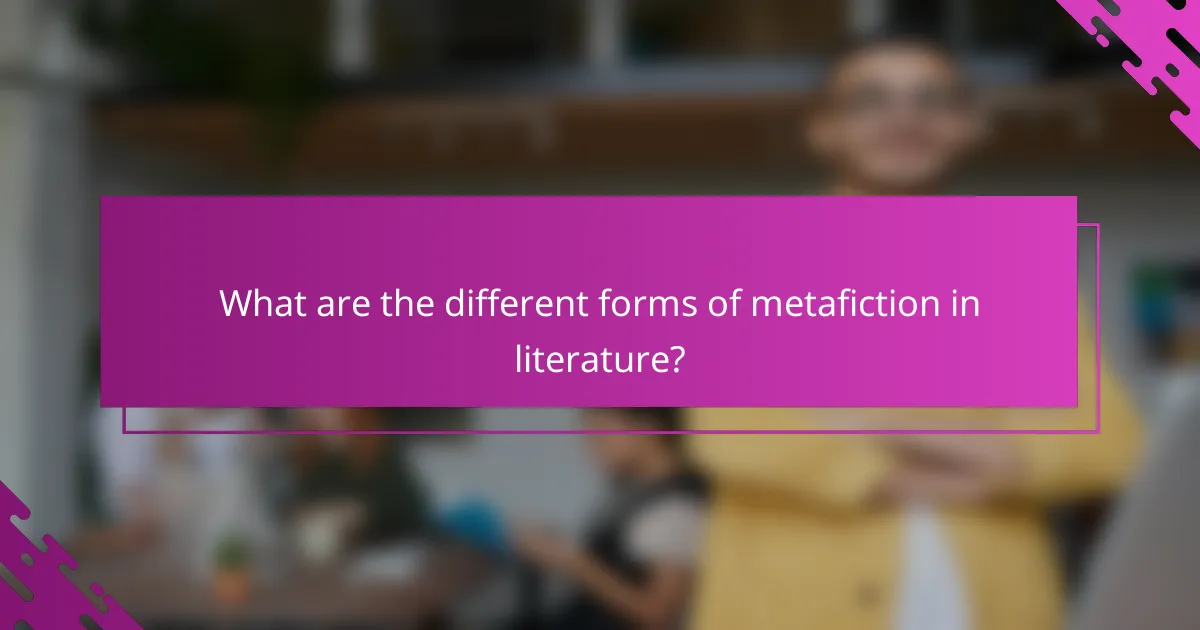
What are the different forms of metafiction in literature?
Metafiction in literature appears in various forms, including self-referential narratives, parody, and unreliable narration. Self-referentiality emphasizes the text’s nature as a story, often breaking the fourth wall. Parody uses humor to critique other literary works or styles. Unreliable narration challenges the reader’s perception of truth within the story, prompting deeper engagement with the text. Each form enhances reader awareness and reflects authorial intent, creating a layered reading experience.
Which narrative techniques are commonly used in metafiction?
Metafiction commonly employs narrative techniques such as self-referentiality, unreliable narration, and breaking the fourth wall. These techniques enhance authorial intent and reader awareness, creating a unique reading experience. Self-referentiality allows the text to comment on its own narrative structure, while unreliable narration challenges readers’ perceptions of truth. Breaking the fourth wall directly engages readers, making them aware of their role in the narrative.
How do metafictional elements vary across genres?
Metafictional elements vary significantly across genres, influencing narrative style and reader engagement. In literary fiction, metafiction often emphasizes self-referentiality, prompting readers to question the nature of storytelling. In contrast, genres like science fiction may use metafiction to explore speculative realities, blending fiction with philosophical inquiry.
In postmodern literature, metafiction frequently blurs the boundaries between fiction and reality, challenging traditional narrative structures. Conversely, in genres like mystery, metafiction can serve to engage readers through puzzles that highlight the mechanics of storytelling. Each genre employs metafiction to enhance thematic depth and reader awareness, creating a unique interplay between text and context.
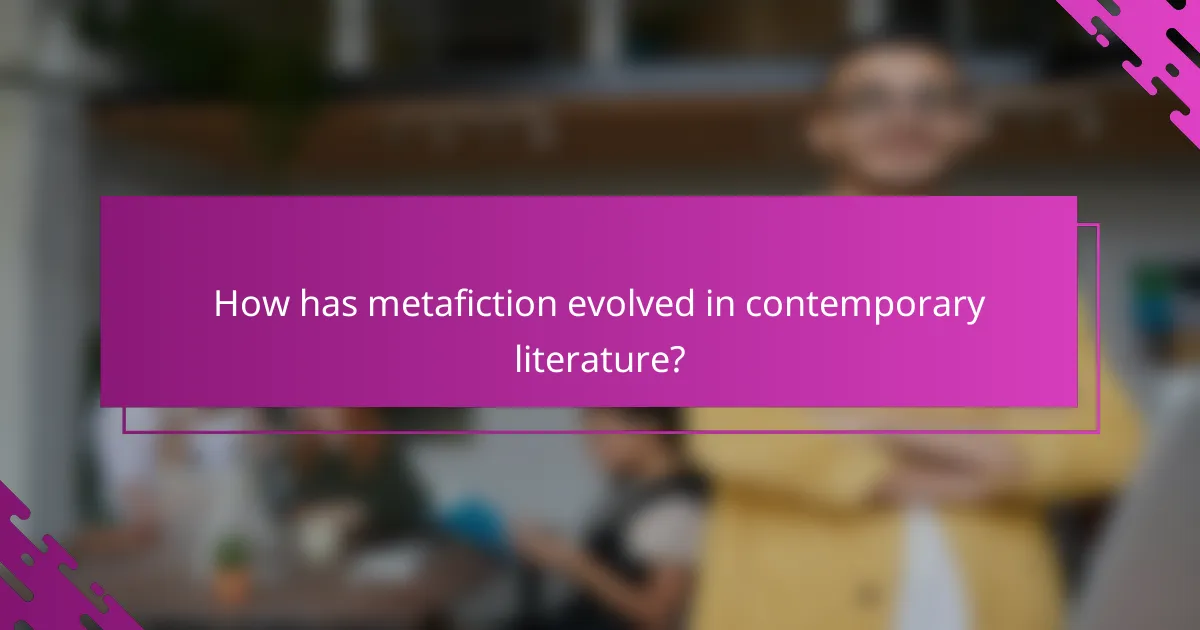
How has metafiction evolved in contemporary literature?
Metafiction has evolved to emphasize self-referentiality, authorial intent, and reader awareness. Contemporary literature often blurs the lines between fiction and reality, inviting readers to question narrative structures. This evolution reflects a shift towards interactive storytelling, where the reader’s role is central.
Modern metafiction frequently incorporates unique attributes, such as non-linear narratives and direct addresses to the audience. Authors like David Foster Wallace and Italo Calvino exemplify this trend, using metafictional techniques to explore complex themes.
Additionally, metafiction has become a tool for critiquing traditional storytelling conventions. By highlighting the artificiality of narratives, contemporary works challenge readers to reconsider their engagement with literature. This rare attribute fosters deeper awareness of the reading experience.
Overall, the evolution of metafiction in contemporary literature signifies a move towards a more self-aware and participatory form of storytelling.
What role do cultural contexts play in the perception of metafiction?
Cultural contexts significantly influence the perception of metafiction by shaping reader expectations and interpretations. Different cultures have unique literary traditions that inform how metafictional elements are understood. For instance, Western audiences may focus on authorial intent, while Eastern readers might emphasize reader engagement and collective storytelling.
Metafiction often challenges conventional narratives, and cultural backgrounds can affect how this challenge is received. In cultures with a strong oral storytelling tradition, metafiction might be seen as a continuation of narrative playfulness, whereas in more formal literary contexts, it may provoke discomfort or resistance.
Additionally, cultural norms surrounding authorship and authority impact the acceptance of metafiction. In cultures that value individual expression, metafiction may be celebrated for its self-referentiality. Conversely, in collectivist societies, the focus on the narrative’s communal aspects may overshadow the author’s self-awareness.
Ultimately, the role of cultural contexts in metafiction is multifaceted, shaping both the creation and reception of self-referential works, highlighting the interplay between culture, narrative form, and reader engagement.
How do modern authors utilize metafictional techniques?
Modern authors utilize metafictional techniques to blur the line between fiction and reality, enhancing reader engagement. These techniques often include self-referentiality, where the text acknowledges its own fictional nature, and authorial intent, which invites readers to consider the author’s perspective. Reader awareness is heightened as narratives draw attention to their construction, prompting critical thinking about storytelling. This interplay enriches the reading experience, making it more interactive and reflective.
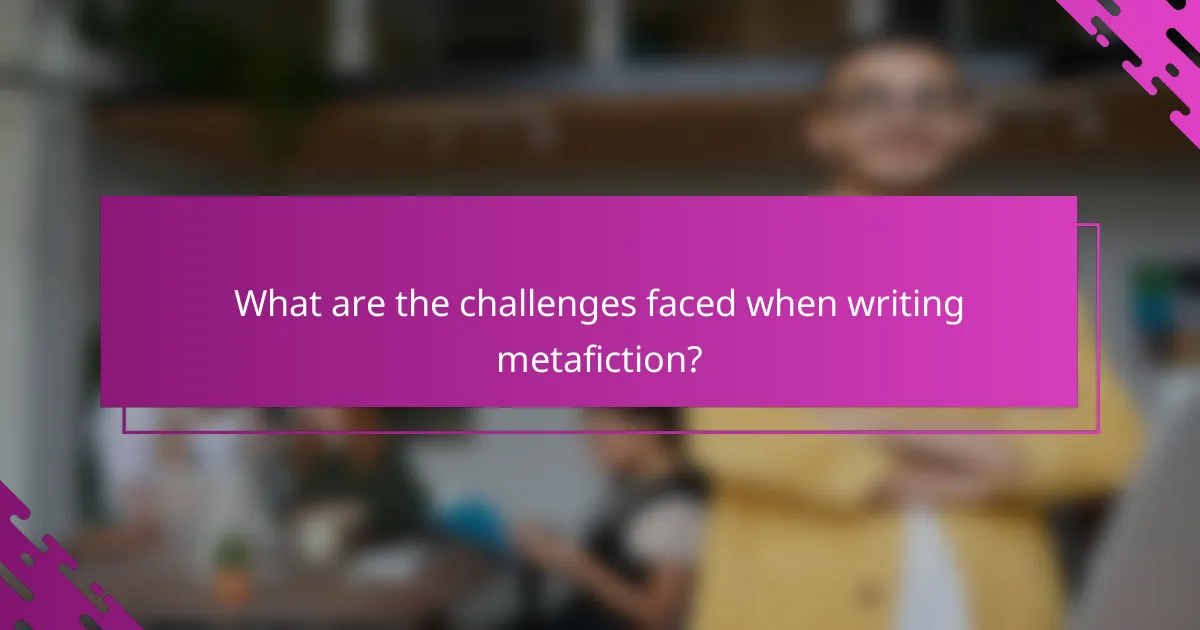
What are the challenges faced when writing metafiction?
Writing metafiction presents unique challenges, primarily due to its self-referential nature. Authors must balance narrative complexity with reader engagement.
One challenge is maintaining clarity while exploring the layers of fiction. Readers may become confused by constant shifts between reality and fiction. Additionally, authors must convey their intent without alienating the audience. This requires a keen awareness of reader expectations and an ability to manipulate those expectations effectively.
Another challenge is the risk of appearing pretentious. Metafiction can sometimes come across as self-indulgent, which may turn readers off. Authors need to ensure that their self-referential elements serve a purpose in the narrative.
Finally, metafiction often demands a higher level of reader awareness. Readers must actively engage with the text, which can be daunting for those unaccustomed to this style. Balancing accessibility with complexity is crucial for successful metafiction.
How can metafiction alienate readers?
Metafiction can alienate readers by emphasizing self-referentiality, which disrupts immersion. This technique often highlights the artificiality of the narrative, distancing readers from emotional engagement. As a result, readers may feel confused or frustrated when confronted with overt authorial intent. The awareness of narrative structure can lead to a critical distance, making it challenging for readers to connect with characters or plot.
What are common misconceptions about metafiction?
Common misconceptions about metafiction include the belief that it is solely self-indulgent or lacks substance. Many readers assume metafiction only focuses on its own narrative structure, ignoring its potential to explore deeper themes. Another misconception is that metafiction alienates readers, whereas it often invites them to engage critically with the text. Additionally, some think metafiction undermines authorial intent, but it can actually enhance the understanding of the author’s purpose. Finally, there is a belief that metafiction is a modern phenomenon, when in fact, it has roots in classic literature.
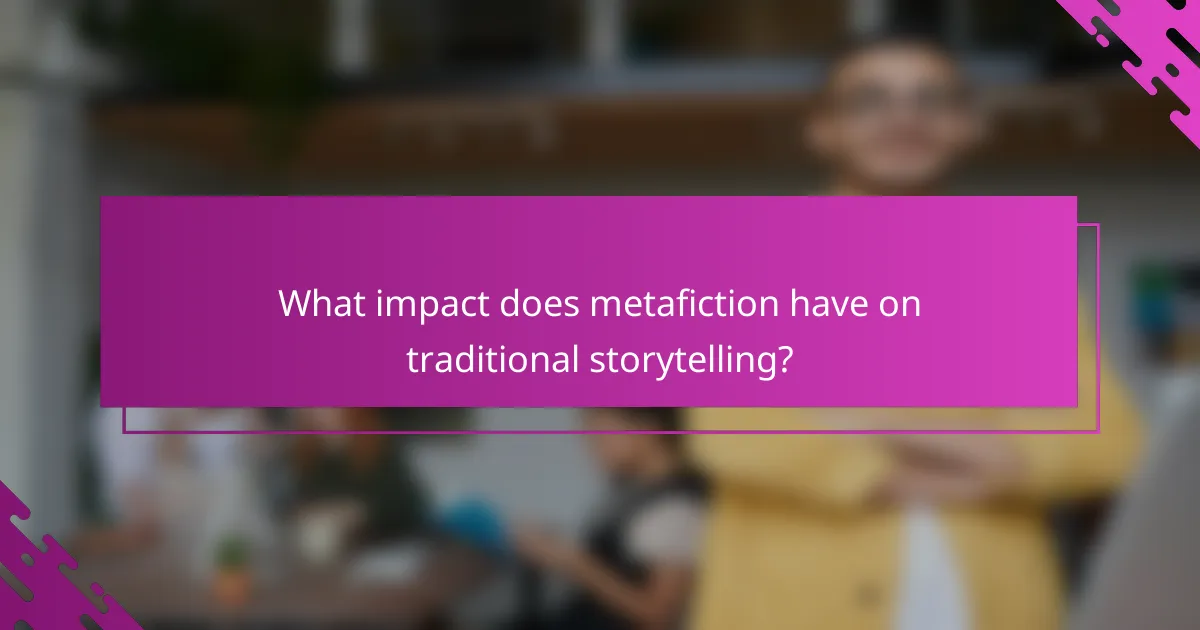
What impact does metafiction have on traditional storytelling?
Metafiction challenges traditional storytelling by emphasizing self-referentiality and disrupting narrative conventions. This approach encourages readers to question the nature of fiction and the author’s intent. By breaking the fourth wall, metafiction invites readers to engage critically with the text. As a result, traditional storytelling’s immersive experience is transformed into a more reflective and analytical interaction. This shift can enhance reader awareness and deepen the understanding of narrative structures.
How does metafiction challenge narrative conventions?
Metafiction challenges narrative conventions by self-consciously reflecting on its own storytelling processes. It blurs the boundaries between fiction and reality, prompting readers to question the nature of authorship and narrative structure. By incorporating elements like authorial commentary and direct addresses to the audience, metafiction disrupts traditional storytelling. This unique approach heightens reader awareness and invites critical engagement with the text. As a result, metafiction often redefines the role of the reader, transforming them from passive consumers into active participants in the narrative experience.
What are the implications of metafiction for literary criticism?
Metafiction significantly influences literary criticism by challenging traditional narrative structures and authorial intent. It encourages readers to question the relationship between text and reality, fostering a heightened awareness of storytelling techniques. This self-referentiality prompts critics to explore the implications of narrative form and the role of the author, shifting focus toward the reader’s experience and interpretation. As a result, metafiction opens new avenues for analysis, emphasizing the constructed nature of literature and the interplay of meaning within texts.
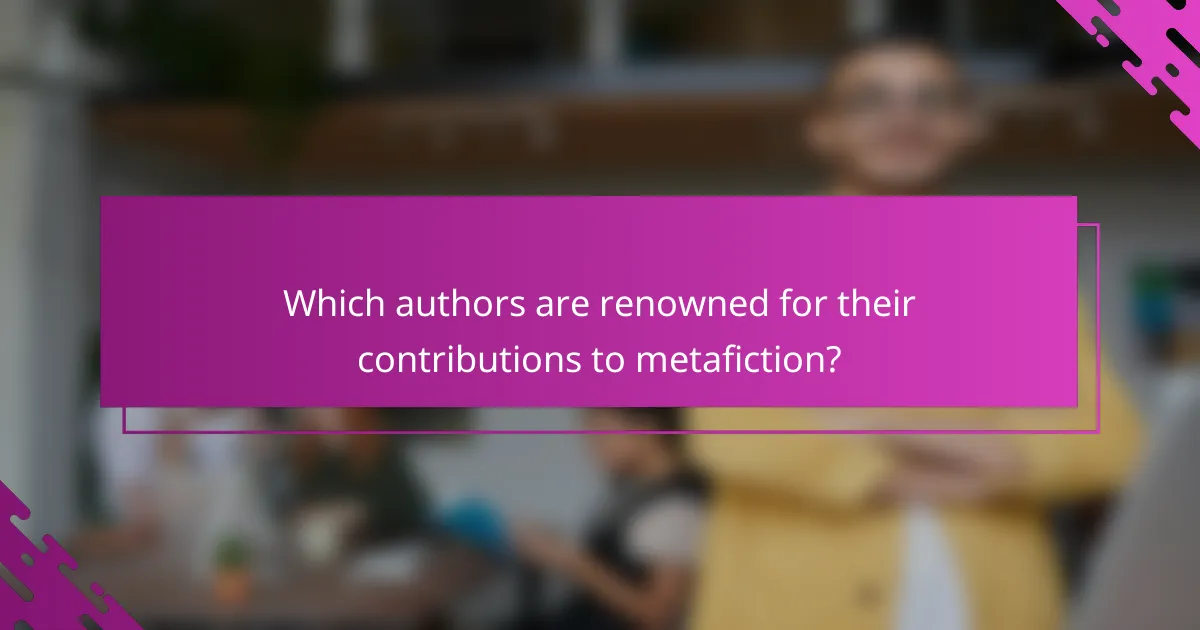
Which authors are renowned for their contributions to metafiction?
Renowned authors of metafiction include Jorge Luis Borges, Italo Calvino, and Thomas Pynchon. These writers explore self-referentiality and challenge traditional narrative forms. Borges’ works often blur the line between fiction and reality, while Calvino employs playful structures. Pynchon critiques society through complex, layered storytelling. Each author enhances reader awareness through unique narrative techniques.
How do the works of specific authors exemplify metafictional techniques?
The works of specific authors exemplify metafictional techniques by highlighting self-referentiality, authorial intent, and reader awareness. For instance, Jorge Luis Borges often blurs the line between fiction and reality, prompting readers to question the nature of narrative. Similarly, Italo Calvino employs playful structures that invite readers to engage with the text’s construction. These techniques encourage a critical examination of storytelling itself, making the act of reading a central theme. Metafiction serves as a mirror reflecting the complexities of literature and the role of the reader.
What can be learned from analyzing metafiction in different cultures?
Analyzing metafiction across cultures reveals insights into self-referentiality, authorial intent, and reader awareness. Different cultural contexts shape how metafiction is perceived and utilized. For example, Western metafiction often emphasizes the relationship between the author and the text, while Eastern traditions may focus on the reader’s role in interpreting meaning. This variation highlights unique attributes of metafiction that reflect cultural values and literary traditions. The study of these differences can enhance understanding of narrative techniques and the broader implications of storytelling across diverse societies.
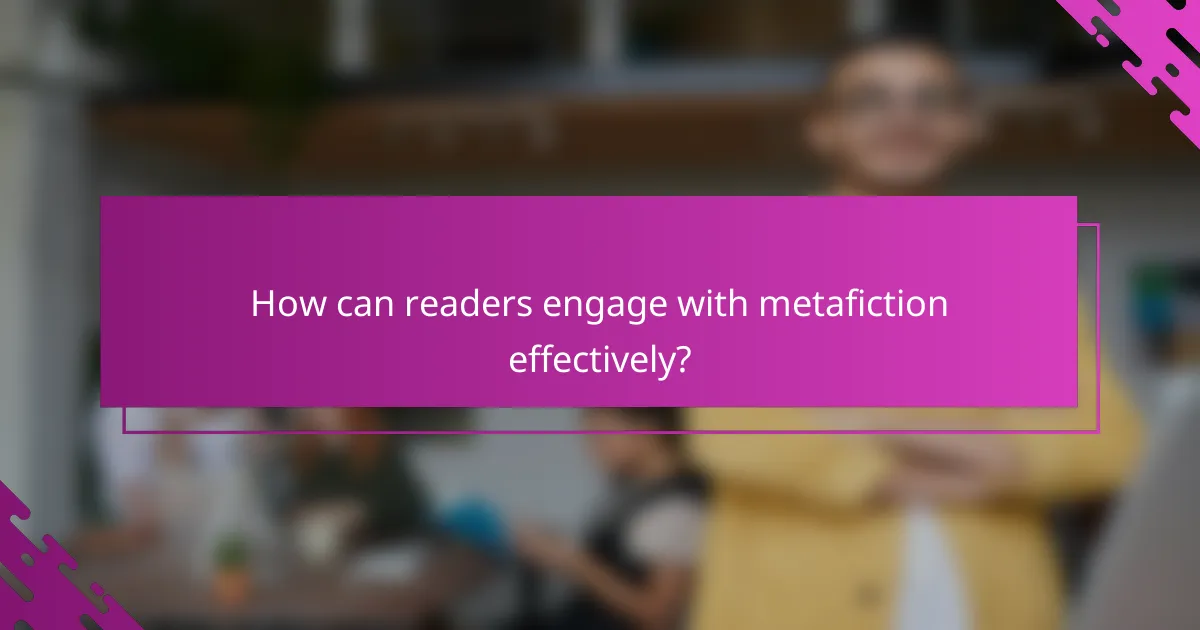
How can readers engage with metafiction effectively?
Readers can engage with metafiction effectively by actively questioning the narrative structure and authorial intent. This self-awareness enhances their reading experience. They should look for moments where the text reflects on its own storytelling, which can deepen their understanding. Engaging with metafiction often requires recognizing the blurred lines between fiction and reality, prompting readers to think critically about the role of the author and their own interpretations. Additionally, discussing metafiction with others can provide new insights and perspectives, enriching the overall engagement.
What strategies enhance the understanding of metafictional works?
Engaging with metafictional works requires strategies that enhance self-referentiality, authorial intent, and reader awareness. Analyzing the narrative structure improves understanding of how the text comments on itself.
Encouraging active reader participation fosters deeper engagement with metafiction. Readers should question the author’s intent and the narrative’s reliability.
Utilizing intertextual references can clarify how metafiction interacts with traditional storytelling. Recognizing these connections enhances appreciation of the work’s complexity.
Discussion and analysis of metafictional themes in group settings can deepen insights. Sharing perspectives helps uncover various interpretations and enriches the reading experience.
What are best practices for discussing metafiction in literary circles?
Engaging in metafiction discussions effectively requires a focus on self-referentiality, authorial intent, and reader awareness. Prioritize clarity by defining key concepts and encouraging open dialogue.
Encourage participants to analyze how metafiction challenges traditional narrative forms. This deepens understanding of its unique attributes, such as blurring the lines between fiction and reality.
Incorporate examples from notable works to illustrate points, enhancing engagement and fostering critical thinking. Discuss how authorial intent shapes the reader’s experience, considering how awareness of narrative techniques influences interpretation.
Promote a respectful atmosphere for diverse opinions, allowing for exploration of rare attributes in metafiction, like its commentary on the nature of storytelling itself. This approach enriches discussions and broadens perspectives.
